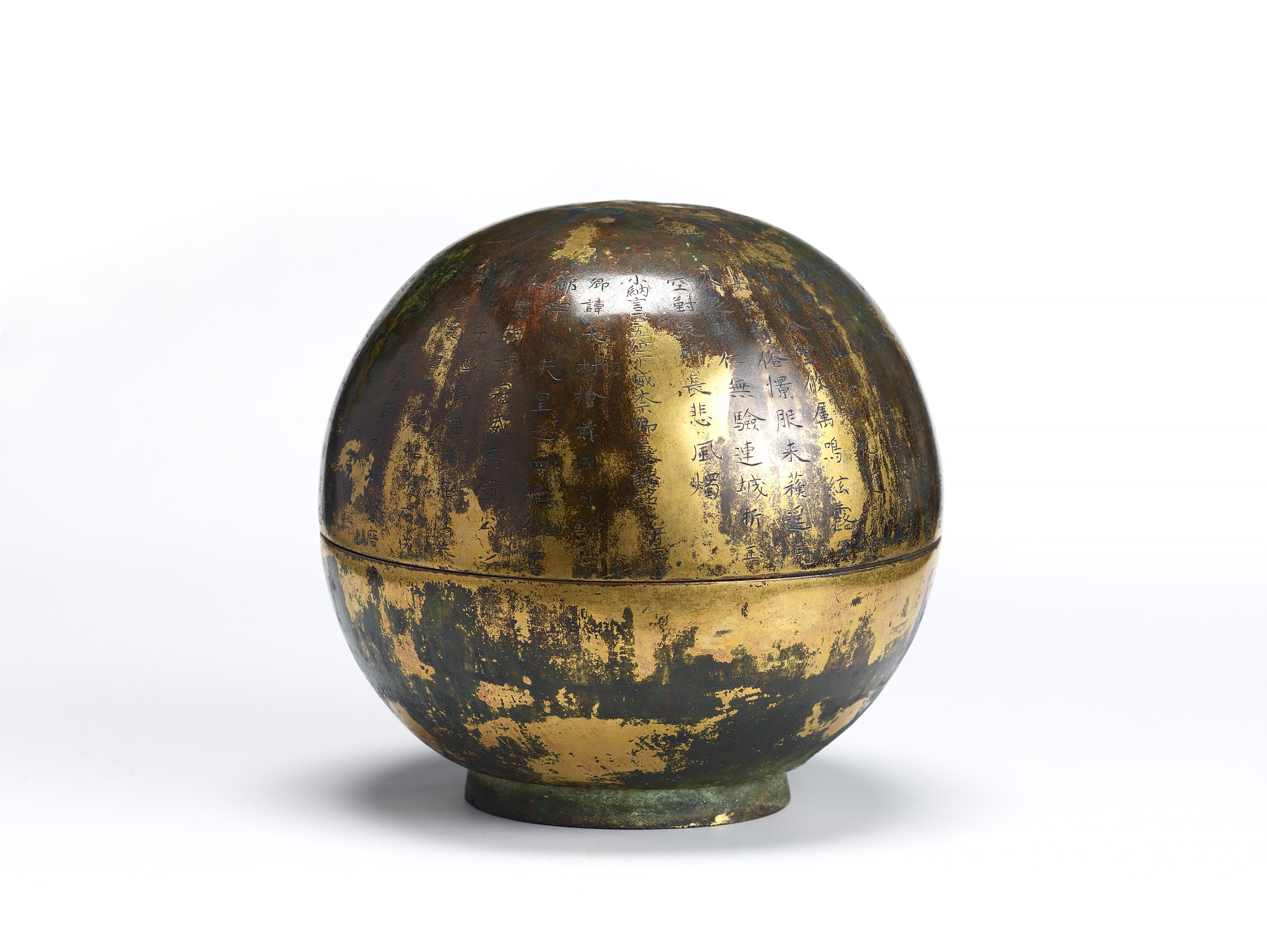- TOP
- The KNM Collection
- Masterpieces of the KNM
- Archaeological Relics
- Gilt-bronze Cinerary Container of Ina-no-Omura
*Click or tap image to enlarge.
Archaeological Relics
Gilt-bronze Cinerary Container of Ina-no-Omura
- Excavation from Anamushi, Nara Prefecture
- Japan, Asuka Period, dated 707
- H. 24.2 cm
- Shitenno-ji Temple, Osaka
This container for Ina-no-Omura's ashes bears a 391-character, thirty-nine-column inscription on the lid. According to the inscription, Ina-no-Omura was a descendant of the Emperor Senka and began his career as an official during the reign of Emperor Jito. Later, he served under the Emperor Mommu as a Minor Counsellor. With the establishment of the Taihorei laws, he received the court ranking of Junior Fifth Rank and became a member of the aristocracy. He was appointed to feudal lord of Echigo province in 705 and died there in 707.
The inscription also relates that he was buried in his birth place, Yamakimi-no-sato of Katsuragishita County in Yamato, present-day Kashiba-cho, Kitakatsuragi County in Nara.
This cinerary container was excavated from beneath a jar that had been placed upside down during the Meiwa Era (1764-1772) in the Edo Period. The spherical shape of the container is unique. The top half of the sphere is a removable lid. A similar cinerary container was excavated from a site in Saga Prefecture, but does not bear an inscription.







